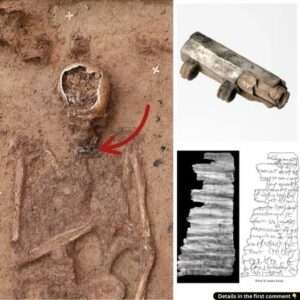Nestled within the ruins of Pompeii lies a remarkable artifact that has captivated visitors for centuries – the dog mosaic found in the vestibule of the House of the Tragic Poet. This exquisite piece of art serves as both a warning and a testament to the enduring power of history.
The centerpiece of the mosaic features a ferocious canine, beneath which is inscribed the Latin phrase “Cave Canem,” translating to “Beware of the Dog.” This warning to intruders is a common motif found in ancient Roman homes, intended to warn unwelcome guests of the presence of a guard dog on the premises. Despite being buried under layers of volcanic ash and debris from the eruption of Mount Vesuvius in 79 AD, the mosaic has withstood the test of time, preserving this ancient message for future generations to behold.

The House of the Tragic Poet, where this mosaic is located, is believed to have been the residence of a prominent individual, perhaps even a poet of great renown. The intricate design of the mosaic, showcasing vivid colors and fine details, reflects the artistic sophistication of the ancient Roman civilization. Each tile carefully placed by skilled artisans, forming a mosaic that not only served a practical purpose but also added an element of grandeur to the entrance of the house.
As visitors step into the vestibule of the House of the Tragic Poet, they are greeted by the gaze of the vigilant dog, a reminder of the importance of security and protection in ancient Roman society. The warning inscribed below the mosaic serves as a poignant reminder of the dangers that lurk beyond the threshold, urging caution and mindfulness to those who enter.
The preservation of this dog mosaic amidst the ruins of Pompeii is a testament to the enduring legacy of this ancient city. Despite the passage of time and the devastation wrought by natural forces, the voice of the past continues to speak to us through the art and artifacts that have been unearthed from the ashes.
In conclusion, the dog mosaic at the House of the Tragic Poet stands as a poignant symbol of both warning and preservation, offering a glimpse into the daily lives and customs of the ancient Romans. It serves as a reminder of the fleeting nature of existence and the eternal presence of history in our midst.





